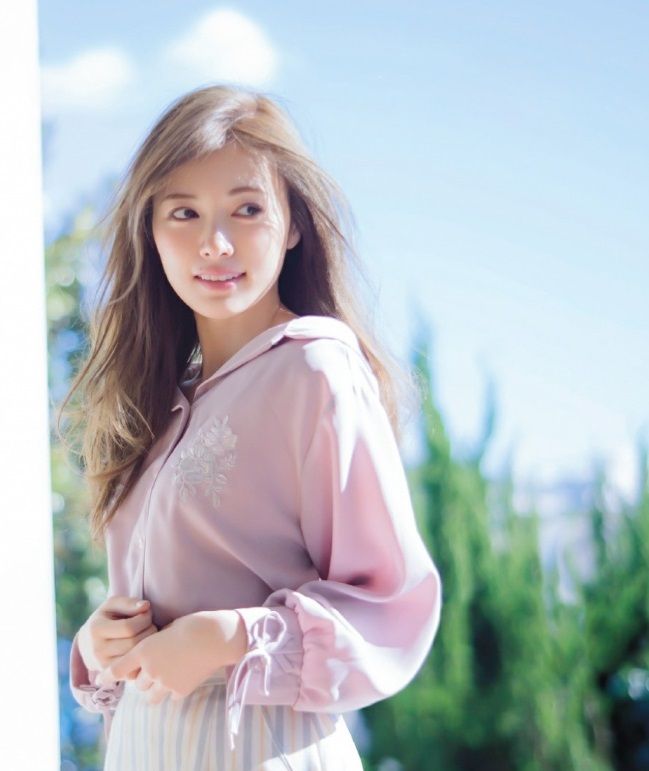【Python3】基于OpenCV与dlib库自动识别人脸添加圣诞帽
Github链接:
https://github.com/LiuXiaolong19920720/Add-Christmas-Hat
环境:
Win10 +Anaconda(自带Python3.6)
IDE:
Pycharm (其Interperter使用的是Anaconda自带的Python3.6)
安装opencv 和dlib库:
在Anaconda Prompt中输入以下两行指令:
conda install -c conda-forge opencv=3.2.0
conda install -c conda-forge dlib=19.4
安装过程中询问进程是否继续,全部输入y继续安装
可能在pycharm里面依然不能找到dlib module,这时在Prompt里面输入
pip install dlib
等待其显示安装完毕即可
初始图片:
虽然dlib库中的.init.py中没有任何的函数
一共只有三行
predictor_path = "shape_predictor_5_face_landmarks.dat" # The dlib_predictor in current dir
predictor = dlib.shape_predictor(predictor_path)
# dlib正脸检测器
detector = dlib.get_frontal_face_detector()
在add_hat.py中设置了dlib.shape_predictor的路径(默认为当前文件夹下,文件名包含在项目中)
r, g, b, a = cv2.split(hat_img)
rgb_hat = cv2.merge((r, g, b))
cv2.imwrite("hat_alpha.jpg", a)
这里面的imwrite生成了一个之前通过hat_img分裂成的rgba中的alpha通道(阿尔法通道是一个8位的灰度通道,该通道用256级灰度来记录图像中的透明度信息,定义透明、不透明和半透明区域,其中白表示不透明,黑表示透明,灰表示半透明。)
生成了一个如下照片:
# dlib正脸检测器
detector = dlib.get_frontal_face_detector()
# 正脸检测
dets = detector(img, 1)
上方代码是通过调用dlib库中的函数来提取图片中的正脸
x, y, w, h = d.left(), d.top(), d.right()-d.left(), d.bottom()-d.top()
# x,y,w,h = faceRect
# cv2.rectangle(img,(x,y),(x+w,y+h),(255,0,0),2,8,0)
# 关键点检测,5个关键点
shape = predictor(img, d)
# for point in shape.parts():
# cv2.circle(img,(point.x,point.y),3,color=(0,255,0))
# cv2.imshow("image",img)
# cv2.waitKey()
# 选取左右眼眼角的点
point1 = shape.part(0)
point2 = shape.part(2)
能检测五个关键点,因为predictor的path中所使用的.dat文件就是只辨识出五个关键点的函数路径(其余有可以辨识68个点的):
PREDICTOR_PATH = “/shape_predictor_68_face_landmarks.dat”
# 根据人脸大小调整帽子大小
factor = 1.5
resized_hat_h = int(round(rgb_hat.shape[0]*w/rgb_hat.shape[1]*factor))
resized_hat_w = int(round(rgb_hat.shape[1]*w/rgb_hat.shape[1]*factor))
if resized_hat_h > y:
resized_hat_h = y-1
resized_hat_h与resized_hat_w是重新调整hat的高度和宽度
if 判断是进行算法判断
# 根据人脸大小调整帽子大小
resized_hat = cv2.resize(rgb_hat, (resized_hat_w, resized_hat_h))
# 用alpha通道作为mask
mask = cv2.resize(a, (resized_hat_w, resized_hat_h))
mask_inv = cv2.bitwise_not(mask)
通过opencv函数进行resize
然后将resize生成的结果准备对原图中进行覆盖(mask)

生成bg文件(img中待覆盖区域)
生成hat文件(准备覆盖的文件)
通过计算得出add_hat
再将其放入原图中得出output
全部代码如下:
import numpy as np
import cv2
import dlib
# 给img中的人头像加上圣诞帽,人脸最好为正脸
def add_hat(img,hat_img):
# 分离rgba通道,合成rgb三通道帽子图,a通道后面做mask用
r, g, b, a = cv2.split(hat_img)
rgb_hat = cv2.merge((r, g, b))
cv2.imwrite("hat_alpha.jpg", a)
# ------------------------- 用dlib的人脸检测代替OpenCV的人脸检测-----------------------
# # 灰度变换
# gray = cv2.cvtColor(img,cv2.COLOR_BGR2GRAY)
# # 用opencv自带的人脸检测器检测人脸
# face_cascade = cv2.CascadeClassifier("haarcascade_frontalface_default.xml")
# faces = face_cascade.detectMultiScale(gray,1.05,3,cv2.CASCADE_SCALE_IMAGE,(50,50))
# ------------------------- 用dlib的人脸检测代替OpenCV的人脸检测-----------------------
# dlib人脸关键点检测器
predictor_path = "shape_predictor_5_face_landmarks.dat" # The dlib_predictor in current dir
predictor = dlib.shape_predictor(predictor_path)
# dlib正脸检测器
detector = dlib.get_frontal_face_detector()
# 正脸检测
dets = detector(img, 1)
# 如果检测到人脸
if len(dets) > 0:
for d in dets:
x, y, w, h = d.left(), d.top(), d.right()-d.left(), d.bottom()-d.top()
# x,y,w,h = faceRect
# cv2.rectangle(img,(x,y),(x+w,y+h),(255,0,0),2,8,0)
# 关键点检测,5个关键点
shape = predictor(img, d)
# for point in shape.parts():
# cv2.circle(img,(point.x,point.y),3,color=(0,255,0))
# cv2.imshow("image",img)
# cv2.waitKey()
# 选取左右眼眼角的点
point1 = shape.part(0)
point2 = shape.part(2)
# 求两点中心
eyes_center = ((point1.x+point2.x)//2, (point1.y+point2.y)//2)
# cv2.circle(img,eyes_center,3,color=(0,255,0))
# cv2.imshow("image",img)
# cv2.waitKey()
# 根据人脸大小调整帽子大小
factor = 1.5
resized_hat_h = int(round(rgb_hat.shape[0]*w/rgb_hat.shape[1]*factor))
resized_hat_w = int(round(rgb_hat.shape[1]*w/rgb_hat.shape[1]*factor))
if resized_hat_h > y:
resized_hat_h = y-1
# 根据人脸大小调整帽子大小
resized_hat = cv2.resize(rgb_hat, (resized_hat_w, resized_hat_h))
# 用alpha通道作为mask
mask = cv2.resize(a, (resized_hat_w, resized_hat_h))
mask_inv = cv2.bitwise_not(mask)
# 帽子相对与人脸框上线的偏移量
dh = 0
dw = 0
# 原图ROI
# bg_roi = img[y+dh-resized_hat_h:y+dh, x+dw:x+dw+resized_hat_w]
bg_roi = img[y+dh-resized_hat_h:y+dh, (eyes_center[0]-resized_hat_w//3):(eyes_center[0]+resized_hat_w//3*2)]
# 原图ROI中提取放帽子的区域
bg_roi = bg_roi.astype(float)
mask_inv = cv2.merge((mask_inv, mask_inv, mask_inv))
alpha = mask_inv.astype(float)/255
# 相乘之前保证两者大小一致(可能会由于四舍五入原因不一致)
alpha = cv2.resize(alpha, (bg_roi.shape[1], bg_roi.shape[0]))
# print("alpha size: ",alpha.shape)
# print("bg_roi size: ",bg_roi.shape)
bg = cv2.multiply(alpha, bg_roi)
bg = bg.astype('uint8')
cv2.imwrite("bg.jpg", bg)
# cv2.imshow("image", img)
# cv2.waitKey()
# 提取帽子区域
hat = cv2.bitwise_and(resized_hat, resized_hat, mask=mask)
cv2.imwrite("hat.jpg", hat)
#cv2.imshow("hat", hat)
#cv2.imshow("bg", bg)
# print("bg size: ",bg.shape)
# print("hat size: ",hat.shape)
# 相加之前保证两者大小一致(可能会由于四舍五入原因不一致)
hat = cv2.resize(hat, (bg_roi.shape[1], bg_roi.shape[0]))
# 两个ROI区域相加
add_hat = cv2.add(bg, hat)
# cv2.imshow("add_hat",add_hat)
# 把添加好帽子的区域放回原图
img[y+dh-resized_hat_h:y+dh, (eyes_center[0]-resized_hat_w//3):(eyes_center[0]+resized_hat_w//3*2)] = add_hat
# 展示效果
# cv2.imshow("img",img )
# cv2.waitKey(0)
return img
# 读取帽子图,第二个参数-1表示读取为rgba通道,否则为rgb通道
hat_img = cv2.imread("hat2.png", -1)
# 读取头像图
img = cv2.imread("test.jpg")
output = add_hat(img, hat_img)
# 展示效果
cv2.imshow("output", output)
cv2.waitKey(0)
cv2.imwrite("output.jpg", output)
# import glob as gb
# img_path = gb.glob("./images/*.jpg")
# for path in img_path:
# img = cv2.imread(path)
# # 添加帽子
# output = add_hat(img,hat_img)
# # 展示效果
# cv2.imshow("output",output )
# cv2.waitKey(0)
cv2.destroyAllWindows()
